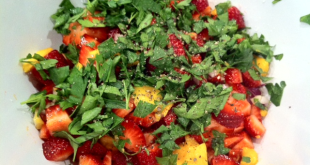Fruits and vegetables are the biggest sources of micro-nutrients required for normal functioning of the human body. Including fruits in our daily diet is absolutely essential. Various guidelines concerning consumption of fruits exist to help us choose the quality and quantity of fruits. Often however, certain traditional guidelines are based on several long-standing conventions and beliefs that either are not true or aren’t understood fully. The good thing is that the stern prevalence of such conventions has propelled scientific research in this direction. Let us delve deeper into the origins of some of these conventions and examine them based on their respective scientific findings.
Myth 1: An apple a day keeps the doctor away
Believe it or not, even today, this quote can subtly drive the consumption of apples. Certainly, apples are one of the many nutritious fruits. One medium apple (95 Kcal) provides 11% of recommended daily allowance (RDA) of Vitamin C, 6% RDA of potassium and 17% RDA of fibre. Unique about apples is the presence of an array of antioxidants (the immediate browning of skin-removed apples reflects this) and beneficial plant pigments (responsible for the red and white colour of the apples).

However, eating an apple a day does not keep a doctor away. Direct studies have been conducted to test whether eating apples actually has a positive difference with respect to medical visits (See 1, 2). Comparison of the medical prescription records of 753 apple eaters (consumption of at least 1 small apple a day for three years) and 7646 non-apple eaters of ages 18 or older yielded no significant difference between the groups (1).
Apples do nevertheless offer various health benefits. Naturally high antioxidant content provides protection against cardiovascular diseases, certain types of cancer, asthma and potentially diabetes and there is proven scientific record for it (3,4). However, similar effects are also seen by consumption of pears, berries and other fruits that share similar nutritional profile as apples.
In a nutshell, apples are great fruits but combining apples with other fruits is always desirable.
Myth 2: A fruit salad bowl is one of the healthiest foods of all times
Firstly let us concentrate on the phrase fruit salad bowl. You will probably visualise different coloured fruits cut and put together, and it definitely looks nutritious! However there are certain considerations to make while we combine different fruits. Fruits in general are divided into four groups: Sweet fruits (like bananas, dates, prunes), sub-acid fruits (sweet apples, pears, apricots, berries, plums, peaches), acidic fruits (oranges, pineapple, pomegranate, strawberries, and other sour fruits) and melons (muskmelon, watermelon and all other melons).
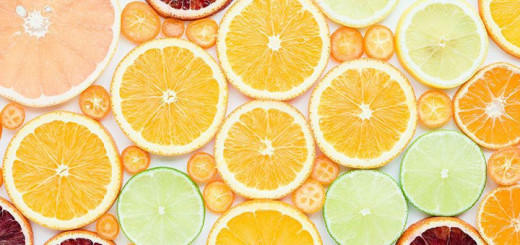
Ideally fruits from different groups should not be combined together. The reason being all four groups require different sets of enzymes dominant in different parts of the digestive tract for digestion. Moreover, acid fruits should not be combined with carbohydrates or proteins. Digestion of carbohydrates starts from the mouth and requires an alkaline medium however eating acidic fruits turns the environment acidic hampering the digestion of carbohydrates. Eating acidic fruits with raw protein food leads to unwanted breakdown of proteins and restricts absorption. Melons, on the other hand, decompose very fast and do not require digestion in the stomach. Eating melons with anything else alters the digestive and absorptive capability and risks its nutritional value.
In sum, eating fruits in wrong combinations does not ensure full nutritional transfer of the components and should be avoided.
Myth 3: Refrigerated cut fruits do not retain the nutritional content
Supermarkets are filled with ready-to-eat cut fruits. It is a general notion that cut fruits if lie around for too long lose their nutritional value. Let’s look closely again and see what exactly happens. A study was conducted where fruits were cut and kept in the fridge and checked daily for their nutritional content and compared to freshly cut fruits. The result, – nutrients lasted longer than beauty. Fruits might lose their natural texture however, they do retain the nutrients. For instance, here’s how much vitamin C each type of fresh-cut fruit lost in six days: Mango, strawberry, and watermelon: less than 5%, Pineapple: 10%, Kiwi: 12%, Cantaloupe: 25%. Fresh cut products have higher respiration rates, increased oxygen demands, and hence higher chances of reacting with losing out on nutrition. Cold storage halts the rates of respiration and hence retains the nutrients.
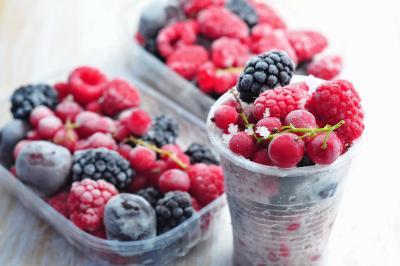
While it would be ideal to eat freshly cut fruits, cold storage won’t take away more that 10% of nutrients on an average basis and could also prove to be healthy.
- Nutritional comparison of fresh, frozen and canned fruits and vegetables
- Fresh cut fruits may retain vitamins
Myth 4: Bananas and cold do not go together
It is a common practice to avoid bananas when suffering from cold and this is particularly followed for children. Probably the experience is that bananas increase the phlegm or the mucus content thereby adding onto the cold. I think the myth stems from Ayurveda teachings. According to Ayurveda, bananas with milk or bananas with yogurt can lead to sinus congestion, cough and cold (See 4, 5). However, Ayurveda attributes all fruit combinations with yogurt responsible for wheezing and cold, not just bananas.
It has been established that bananas are not involved in catalyzing cold at any stage of its development and in fact can help in protection against it (see 1, 2 and 3). Bananas are one of the first foods introduced to infants. They are rich in potassium (23% of RDA per single medium sized banana) and vitamin B6 (41% of RDA) that helps in enhancing immunity during cold and aiding lung function.
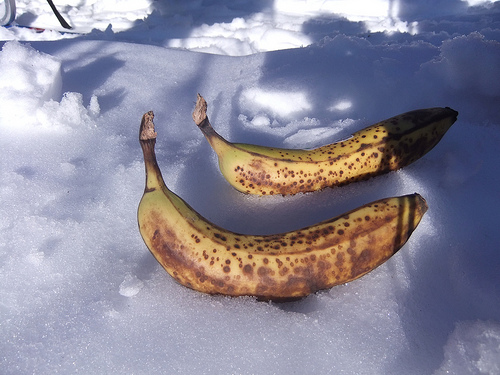
- Effect of bananas on children from cold perspective. (1, 2 and 3)
- Ayurveda perspectives (4, 5)
- Nutritional value (6)
Myth 5:Eating fruits with their intact skin is healthier OR
There isn’t a huge nutritional difference between peeled fruits and fruits with intact skin
Both the statements above represent general biases towards fruit peeling. Some people prefer eating fruits with intact skin, some people do not like the taste and find it easy to peel the fruits and eat thinking that there might not be a major difference between the two. However lets us ask if that is true.
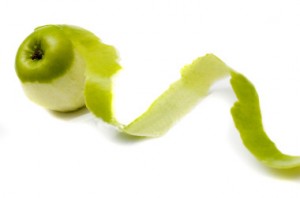
Anti-oxidants such as anthocyanin, tannins and catechins are present in higher proportion in the peel of fruits such as grapes, blueberries, guava. Blue or purple colour fruits have anthocyanin derivatives, yellow coloured fruits are rich in carotenes, xanthin and lutein pigments. They are found just underneath the skin of the fruit. Peel rich in fibre has the tendency to bind toxin chemicals in the food and protect gut mucosa. Peels in citrus food mostly contains more vitamin C than in the pulp. Moreover, most of the antioxidants and phytonutrients are present in the peel and the pith instead of the pulp.
However by peeling, we do not lose a lot of nutrition. According to the United States Department of Agriculture, a large red apple with its skin intact contains about 5 grams of fiber, 13 milligrams of calcium, 239 milligrams of potassium, and 10 milligrams of vitamin C. But remove the skin, and it still contains about 3 grams of fiber, 11 milligrams of calcium, 194 milligrams of potassium, and plenty of its vitamin C and other nutrients.
So effectively there is no nutrient that is completely lost by peeling off the skin, just the proportion of all the nutrients is decreased.
Further tripping…
 The Holy Connection An Alternative Exploration of Existence
The Holy Connection An Alternative Exploration of Existence


